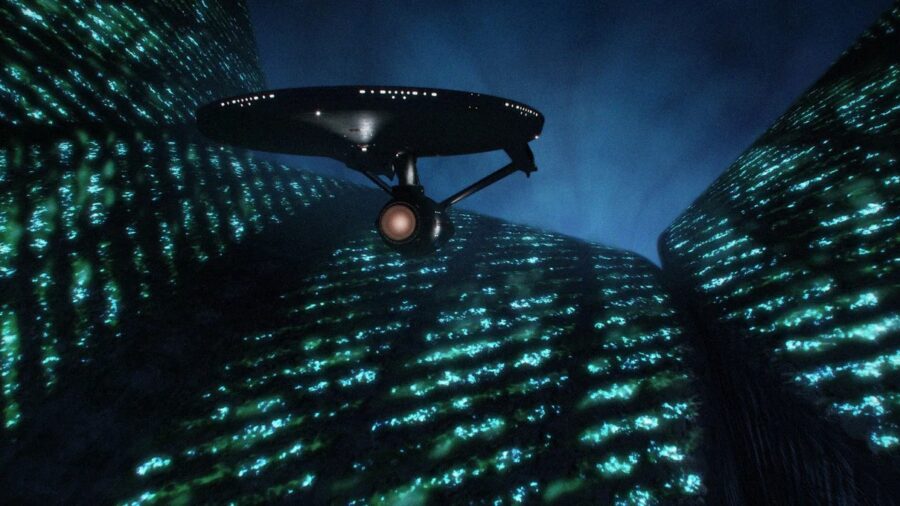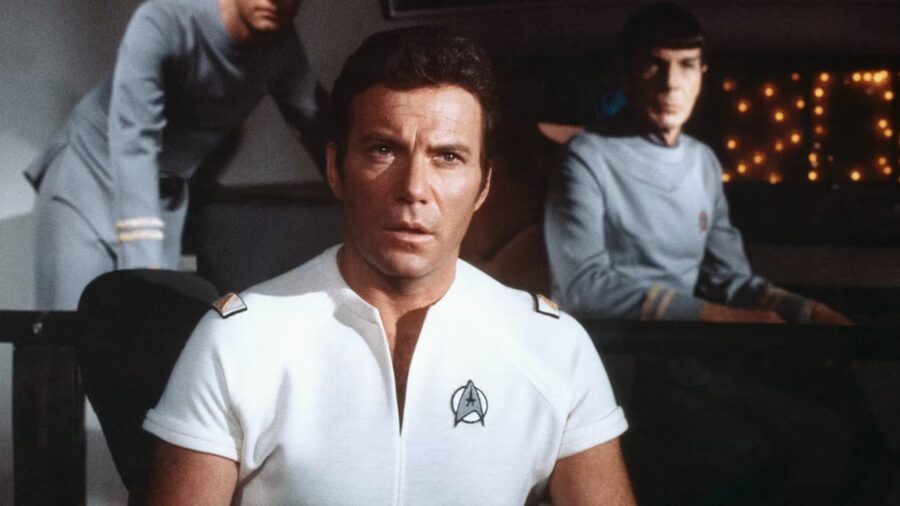Only One Star Trek Movie Is Faithful To Gene Roddenberry’s Vision
The very first movie in the franchise, Star Trek: The Motion Picture, is the only one that Gene Roddenberry would have approved of.
This article is more than 2 years old
Star Trek was created by Gene Roddenberry. That is a short and factual statement, and while it may be true, it obscures the reality that hundreds (if not thousands) of people have contributed to the vast multimedia franchise that Star Trek is now. Along the way, the relatively simple idea for Star Trek that Gene Roddenberry initially had of a utopian future society exploring the cosmos changed as more and more people had creative input. Whether this is a good or bad thing can be debated (and knowing Star Trek fans, someone is having a fierce, loud argument about it right now), but the franchise is undeniably no longer what he made in mind. As it is, only one of the many Star Trek movies that have been made over the years is actually what Gene Roddenberry had dreamt: the much-maligned, awkwardly interesting Star Trek: The Motion Picture.

Star Trek: The Motion Picture was first released by Paramount Pictures in 1979, a full decade after the show that would come to be called The Original Series had been off the air. Gene Roddenberry had actually pitched a feature film all the way back in 1968, envisioning a prequel that would show all the characters meeting for the first time; now that we know nothing bad can happen when a Star franchise makes prequels, it is quite the lost opportunities. But it took years and the surprising popularity of The Original Series in syndication for Paramount to get interested in the idea of a Star Trek film. When it finally came about, Gene Roddenberry was not credited as the director, story writer, screenplay writer, or editor, but his fingerprints are all over it in a way the following films would never capture.
The first Star Trek film is set some years after the conclusion of the Enterprise’s original mission. Kirk is now an Admiral. Spock is preparing to undergo the ritual of Kolinahr to fully abandon his emotional human roots. McCoy has an awesome beard. A mysterious alien entity of shocking, seemingly unlimited power suddenly appears, takes out some newly ferocious-looking Klingons, and is on course to Earth when Kirk gets the band back together and intercepts it. Over the course of the film, we are treated to many long discussions of the nature of the alien entity, emotion, and humanity, along with long, trippy visuals of the cloud structure surrounding the entity that calls itself V’ger. Spoiler alert: it turns out V’ger is Voyager VI, a long-lost NASA space probe that has returned after traveling through a black hole, being upgraded by a distant civilization of living machines, and has accumulated all information that can be rationally understood in the universe. Per its programming, it must now return that information to its creator.
The plot of Star Trek: The Motion Picture echoes numerous episodes of The Original Series that involved a godlike entity that threatens massive destruction, only to be talked down by Kirk (who convinces a machine to essentially commit suicide in one). Unlike the following films, which increasingly began to follow a serialized story building on the preceding movie, The Motion Picture could have been an episode of the show. It has often been criticized for its lack of action and described as “boring,” but frankly, that is largely what Gene Roddenberry had in mind for Star Trek: people encountering new concepts in space and talking their way through them in a rational manner.

There have now been a full thirteen Star Trek movies, with a fourth reportedly in production, featuring the Kelvin timeline crew led by Chris Pine. None of them are focused on what Gene Roddenberry’s show memorably described as a mission to “explore strange new worlds. To seek out new life and new civilizations. To boldly go where no man has gone before.” Instead, the movies increasingly focused on interpersonal conflict and the relationships between the crew of the Enterprise. Gene Roddenberry was famously against there being any kind of conflict in what he saw as the evolved, post-scarcity society of future Earth, which does make it pretty difficult to have a traditional dramatic arc.
But in focusing on the friendships between Kirk, Spock, and McCoy, and later, Kirk and Picard’s PTSD from their lives fighting the Klingons and the Borg, respectively, Star Trek lost what Gene Roddenberry originally envisioned: People encountering weird stuff out there in the cosmos and exploring what it meant to be human.












